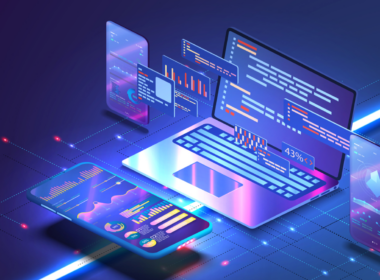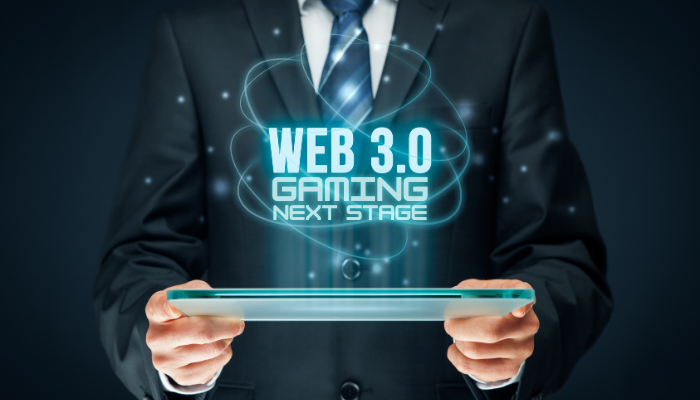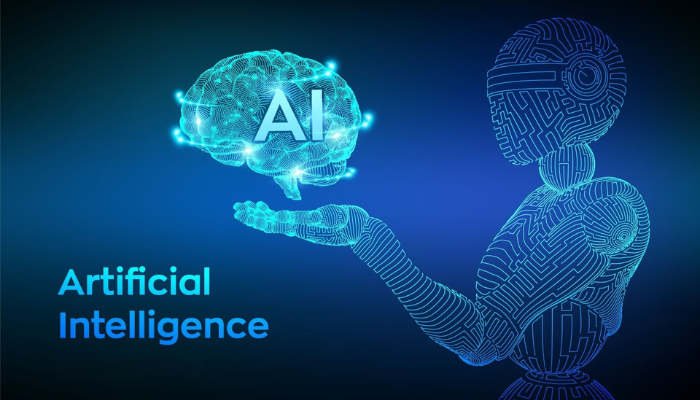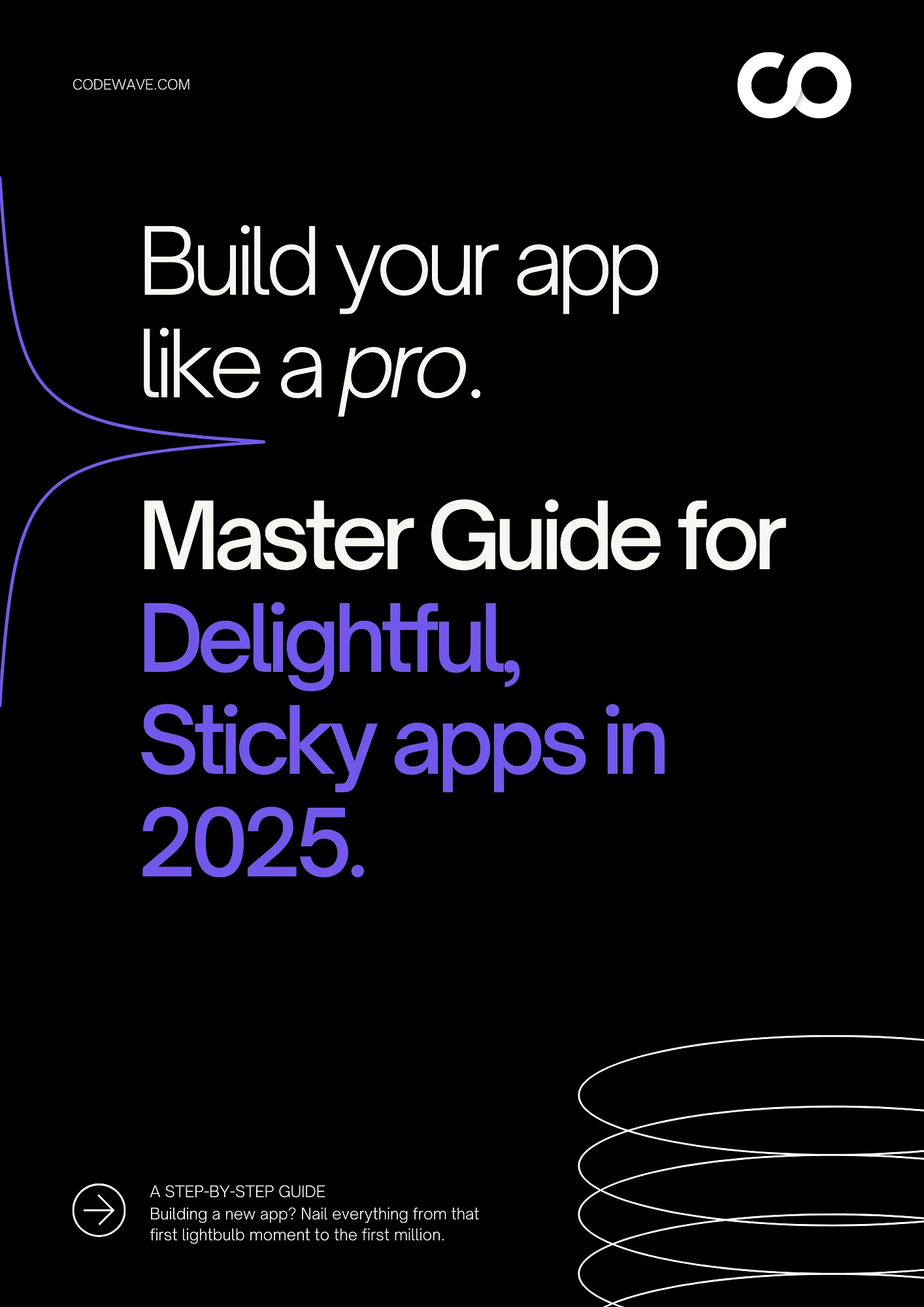For decades, the gaming industry has been built on a closed system—game studios control everything, from in-game assets to marketplace transactions. Players may spend hundreds of hours unlocking skins, grinding for weapons, or collecting rare items, but at the end of the day, they own nothing.
But the gaming landscape is shifting. Web3 gaming is introducing player-driven economies, real ownership, and decentralized worlds where players have actual stakes in the games they play.
This isn’t just about adding NFTs or crypto rewards—it’s about changing the fundamental relationship between players, developers, and in-game economies.
Some of the biggest names in gaming are already making moves:
- Ubisoft launched its first NFT-based in-game assets.
- Epic Games added blockchain-powered games to its store.
- Square Enix is actively investing in Web3 gaming projects.
The message is clear—Web3 gaming isn’t a trend, it’s a shift in how games are built, played, and monetized.
But what exactly is Web3 gaming, and why does it matter? Let’s break it down.
What is Web3 Gaming (And Why Does It Matter)?
Gaming has always been about immersion—whether it’s exploring vast open worlds, competing in high-stakes battles, or building virtual empires. But until now, one thing has always remained the same: players don’t actually own anything they earn in a game.
In traditional gaming, everything—characters, weapons, skins, even in-game currency—belongs to the game publisher, not the player. A player can spend years grinding for rare items, but if the game shuts down or their account gets banned, all of it disappears.
Web3 gaming changes this. By using blockchain technology, it shifts ownership of in-game assets from game studios to players. Instead of assets being locked within a single game, they exist as digital assets (NFTs) or cryptocurrencies that players can trade, sell, or even use across multiple games.
How Web3 Gaming is Different
Web3 gaming brings three fundamental shifts to how games are built and played:
- True Ownership of In-Game Assets
- Players own their digital items just like real-world collectibles. Instead of a skin or weapon being tied to one game, it’s a blockchain-based asset that they can sell or trade freely.
- Example: In a Web3 game, a rare sword isn’t just an in-game item—it’s an NFT that players can list on a marketplace or transfer to another game that supports it.
- Decentralized Game Economies
- Traditional games operate on closed economies where all transactions happen within the game, controlled by developers. Web3 gaming allows peer-to-peer transactions, letting players create and sustain in-game markets.
- Example: Instead of a game studio controlling the economy, players in a Web3 game can trade items, stake tokens, and earn from in-game actions in a decentralized marketplace.
- Interoperability Between Games
- In traditional gaming, assets are locked to a single game. Web3 introduces the potential for cross-game assets, meaning items earned in one game could be used in another that runs on the same blockchain.
- Example: A character skin purchased in one game might be usable in another game if both support the same NFT standard.
How Web3 Gaming is Evolving
The first wave of Web3 games was driven by hype. Play-to-Earn (P2E) models took off, promising players real-world earnings for in-game activity. NFT-based assets were selling for thousands, and early adopters jumped in expecting to profit from gaming like never before.
But many of these games collapsed. Why? Because earning potential alone isn’t enough to keep players engaged. The games often lacked depth, sustainable in-game economies, and most importantly, compelling gameplay.
Now, Web3 gaming is evolving past the speculation phase. The focus is shifting toward long-term player engagement, better blockchain implementation, and games that people actually want to play—whether or not they earn money.
Why Web3 Gaming Matters
Beyond ownership, Web3 gaming is reshaping how games generate revenue, engage players, and sustain long-term economies.
For Players:
- True Asset Ownership – Players have full control over their in-game assets, which can be traded, sold, or even lent outside the game ecosystem.
- Real-World Value – Unlike traditional games where purchases are locked to an account, Web3 assets can retain and grow in value over time.
- Play-to-Earn (P2E) Opportunities – Players can monetize their time and skills through NFT-based economies and tokenized rewards.
For Developers & Studios:
- New Revenue Streams – Beyond microtransactions, Web3 enables royalty-based earnings where studios profit from every secondary sale of in-game items.
- Community-Driven Economies – Smart contracts enable fair revenue sharing, making decentralized game ecosystems more sustainable.
- Interoperability & Cross-Game Assets – Web3 allows assets to be used across multiple games, creating a more connected gaming universe.
For Investors & Businesses:
- Massive Growth Potential – The Web3 gaming market is projected to reach $65.7 billion by 2027, positioning it as one of the fastest-growing sectors in gaming and blockchain.
- Enhanced Engagement & Retention – Blockchain-powered economies increase player retention, as users remain engaged in games where they have real financial stakes.
- Decentralized Finance (DeFi) Integration – Games can incorporate staking, lending, and yield farming, expanding financial opportunities within virtual worlds.
But while Web3 gaming has massive potential, not every game will succeed. Many early Web3 games collapsed because they focused too much on speculation and not enough on actual gameplay.
So, how do you build a Web3 game that lasts—one that players love and investors trust?
That’s what we’ll explore next.
How to Build a Web3 Game: A Step-by-Step Guide
Building a Web3 game isn’t just about adding blockchain features—it’s about creating a fully immersive, engaging, and scalable game that leverages decentralized technology the right way. Whether you’re a game studio, a startup, or a business looking to enter the Web3 gaming space, getting the foundation right is crucial.
Here’s a step-by-step breakdown of how to build a Web3 game that players actually want to play:
Step 1: Define Your Game Concept and Economy
Before jumping into development, you need a clear vision for your Web3 game. This means deciding:
Decide on the game type: Different genres work differently in Web3 gaming. Choose whether your game will be an RPG, shooter, strategy, card-based, or something new. The mechanics should naturally integrate with blockchain elements.
Identify how blockchain improves gameplay: Blockchain should add value beyond just owning assets. Will decentralization enhance player control, create unique economies, or improve in-game interactions? Avoid adding blockchain just for the sake of it.
Design the in-game economy: Plan how tokens, NFTs, and smart contracts will function within the game. Determine whether players will earn, trade, or upgrade assets and how that impacts the game balance.
Think beyond simple NFT sales: Instead of selling NFTs as collectibles, consider their purpose in gameplay.
- Can characters evolve or level up over time?
- Will owning an NFT unlock exclusive abilities or in-game content?
- How does ownership affect progression and strategy?
Why this matters: Many Web3 games fail because they over-focus on tokenomics and under-focus on game design. A strong economy supports the game—it doesn’t replace it.
Once you’ve outlined your game mechanics and economy, it’s time to choose the right blockchain.
Step 2: Choose the Right Blockchain and Technology Stack
Not all blockchains function the same way, and your choice will directly impact transaction speeds, fees, scalability, and interoperability. Selecting the right blockchain is critical for a smooth gaming experience.
Popular Blockchain Options for Web3 Games
- Ethereum – Secure and widely used but comes with high gas fees, which can make microtransactions costly.
- Polygon – A layer-2 solution that offers lower fees and better scalability, making it ideal for games with frequent transactions.
- Solana – Known for high-speed transactions and low fees, making it suitable for real-time multiplayer games and frequent in-game interactions.
- Immutable X – Specifically built for Web3 gaming, offering gas-free NFT minting and instant transactions to improve user experience.
Choosing the Right Tech Stack
A strong technology stack ensures seamless development and integration of blockchain elements into your game.
- Smart Contract Development
- Solidity for Ethereum-based games
- Rust for Solana-based games
- Game Engine
- Unity – Great for cross-platform games, especially mobile and web-based Web3 games
- Unreal Engine – Ideal for high-fidelity 3D games and immersive experiences
- Wallet Integration
- MetaMask – One of the most widely used wallets for Ethereum and Polygon-based games
- WalletConnect – Supports multiple wallets, improving accessibility for players
- Backend & APIs for Blockchain Integration
- Moralis – Provides an easy way to connect blockchain data with your game backend
- Alchemy – A powerful API for Ethereum and Layer-2 blockchains
- The Graph – Helps index and query blockchain data efficiently
You’ll also need the right tech stack, including:
- Smart Contract Development – Solidity (Ethereum), Rust (Solana)
- Game Engine – Unity or Unreal Engine
- Wallet Integration – MetaMask, WalletConnect
- Backend & APIs – Moralis, Alchemy, The Graph
Example: A fast-paced multiplayer Web3 game may require Solana for its low transaction fees and high-speed processing, while a collectible-based card game could work well on Immutable X for cost-efficient NFT trading.
Blockchain? Check. But what about AI? Smart games need smart tech—see the tools you’ll need here.
Once the tech stack is in place, the next step is to develop smart contracts that power your game’s mechanics.
Step 3: Develop Smart Contracts for Game Mechanics
Smart contracts are the core of your Web3 game’s economy, automating transactions, asset ownership, and player interactions on the blockchain. They ensure transparency, security, and decentralization, making in-game assets truly owned by players.
Common Smart Contract Functionalities
- Minting NFTs
- Enables the creation of characters, skins, weapons, or other in-game items as blockchain assets.
- Players can buy, sell, trade, or transfer NFTs, giving real-world value to in-game items.
- In-Game Transactions
- Smart contracts handle trades, rentals, staking, and purchases securely.
- Players can lend, rent, or stake assets for rewards, adding new earning opportunities.
- Player Rewards & Governance
- Game tokens can be used for rewards, staking, and loyalty programs.
- Decentralized Autonomous Organizations (DAOs) allow players to vote on game decisions, fostering a community-driven economy.
Security Considerations for Smart Contracts
A single vulnerability in a smart contract can lead to exploits, broken economies, or game hacks. To protect the in-game economy:
- Conduct Code Audits – Use third-party auditing firms to review contracts for security vulnerabilities.
- Implement Security Testing – Simulate attacks and test contract logic before deployment.
- Use Established Standards – Follow best practices like ERC-721 (NFTs) and ERC-1155 (multi-token standards) for compatibility and security.
Example: Axie Infinity’s early success came from its tokenized economy, but it later suffered from a $600 million hack due to weak smart contract security. Proper contract auditing could have prevented it.
Not sure if your Web3 game idea will stick? Build an MVP first, test it fast, and refine what works. Here’s how to do it right here.
With the foundation of the blockchain economy set, the next challenge is designing a play-and-earn model that actually works.
Step 4: Design a Sustainable Play-and-Earn Model
Early Web3 games struggled because they over-relied on unsustainable Play-to-Earn (P2E) models, where token value dictated player engagement. When token prices dropped, player interest disappeared. A Play-and-Earn approach ensures the game remains fun and rewarding—even without financial incentives.
Key Elements of a Sustainable Play-and-Earn Model
- Reward Active Participation, Not Just Grinding
- Players should enjoy the game first, with earning as a bonus, not the main objective.
- Encourage skill-based or strategic gameplay rather than mindless grinding for tokens.
- Implement non-monetary rewards, such as exclusive content, cosmetic upgrades, or leaderboards.
- Balance NFT Supply and Demand
- Avoid asset inflation by limiting the creation of new NFTs.
- Introduce burn mechanisms (e.g., NFT fusion, upgrades, or seasonal resets) to maintain scarcity and value.
- Implement utility-driven NFTs, ensuring they play a role beyond speculation (e.g., access to exclusive game modes, special abilities).
- Enable Multiple Revenue Streams
- Game studios should earn from more than just NFT sales to maintain financial stability.
- Include in-game transactions, royalties on secondary sales, premium content, or subscriptions as part of the revenue model.
- Consider integrating advertising, partnerships, or DeFi mechanics to diversify income streams.
Example: A successful Web3 game might introduce seasonal content, staking mechanisms, or premium battle passes to diversify revenue instead of relying solely on new NFT sales.
A great in-game economy won’t matter if the game itself doesn’t perform well. That’s why the next step is ensuring your game infrastructure can handle scale and demand.
Step 5: Build and Optimize the Game Infrastructure
Beyond blockchain, Web3 games need high-performance infrastructure to support seamless gameplay. This includes:
A successful Web3 game isn’t just about blockchain—it also requires high-performance infrastructure to ensure smooth gameplay, security, and accessibility. A poor technical foundation leads to lag, transaction failures, and frustrated players.
Key Components of Web3 Game Infrastructure
- Scalable Game Servers
- Multiplayer games need robust, low-latency servers to handle matchmaking, real-time interactions, and live updates.
- Use cloud-based solutions (AWS, Google Cloud, Azure) or decentralized gaming infrastructure (Xternity, Stardust) for better scalability.
- Decentralized Storage for NFTs and Game Assets
- Storing NFT metadata or game assets directly on the blockchain is expensive and inefficient.
- Solutions like IPFS (InterPlanetary File System) or Arweave offer cost-effective, secure, and decentralized storage for NFTs, character skins, weapons, and maps.
- User-Friendly Interfaces & Seamless Web3 Integration
- Most gamers aren’t crypto experts—blockchain elements should feel invisible.
- Simplify onboarding with one-click wallet integrations (e.g., MetaMask, WalletConnect) and easy account creation.
- Optimize gas fees by batching transactions, using Layer-2 scaling solutions (Polygon, Immutable X), or covering small fees for users to improve accessibility.
Example: A Web3 game that requires complex wallet setups and constant crypto transactions will turn players away. Instead, simplifying blockchain interactions with gasless transactions and intuitive UX can enhance adoption.
Once your game is running smoothly, the final step is launching and scaling it to a wider audience.
Step 6: Launch, Market, and Grow Your Web3 Game
Once your game is built, launching and scaling it is just as important as development. The Web3 gaming space is still early-stage, meaning strong marketing and community-driven growth can define success.
Key Strategies for a Successful Launch & Growth
- Early Access & Beta Testing
- Start with a closed beta or early access launch to gather feedback, fix bugs, and balance gameplay mechanics.
- Use testnet environments to simulate real transactions before deploying on the mainnet.
- Offer exclusive in-game rewards or NFTs to early adopters to incentivize participation.
- Community-First Growth
- Build a strong, engaged community on Discord, Twitter, and Web3-native platforms.
- Encourage players to contribute ideas, vote on updates, and feel ownership in the game’s evolution through DAOs or governance models.
- Leverage airdrops, NFT giveaways, and referral programs to expand the player base.
- Strategic Partnerships
- Collaborate with blockchain projects, NFT collections, and DeFi platforms to gain visibility.
- Partner with gaming influencers, Web3 content creators, and streamers to drive hype and onboarding.
- Get featured on blockchain launchpads, NFT marketplaces, and Web3 gaming platforms for wider exposure.
- Continuous Game & Economy Updates
- Regularly release new content, events, and gameplay improvements to keep players engaged.
- Adjust tokenomics, NFT supply, and rewards based on player behavior and market conditions.
- Monitor the game economy to prevent inflation, overpowered assets, or pay-to-win mechanics.
Example: Games like The Sandbox grew by involving players as co-creators, offering rewards for user-generated content and keeping the economy dynamic.
Cool, you know how to build a Web3 game. But here’s the thing—what works today might not work tomorrow. Web3 gaming is evolving fast. So, what’s next? Let’s look at the trends shaping the future.
Web3 game? Cool. The right dev team? Even cooler. Check out the top software pros who get it here.
Key Trends Shaping the Future of Web3 Gaming
1. Play-to-Earn is Becoming Play-and-Earn
Early P2E models were heavily reliant on token prices, meaning when the value of in-game tokens dropped, so did player interest. Today, studios are moving toward Play-and-Earn models, where earning is a bonus—not the main reason people play.
- Example: Instead of just grinding for tokens, games are introducing skill-based rewards, staking mechanisms, and hybrid economies that don’t collapse when token demand fluctuates.
2. Stronger In-Game Economies
A common mistake in early Web3 games was inflation—too many rewards being distributed without enough demand to support them. Now, game studios are designing better tokenomics, balancing how assets are created, earned, and used within the game.
- Example: Games are implementing burn mechanics (destroying excess tokens), staking systems, and tiered asset structures to ensure long-term economic stability.
3. AI and Blockchain Are Merging
Artificial Intelligence is becoming a key driver in Web3 gaming, improving areas like dynamic NPC behavior, procedural content generation, and fraud prevention. Blockchain ensures fairness, security, and true ownership, while AI makes the gaming experience more immersive.
- Example: AI-driven NPCs that interact differently based on blockchain-verified player decisions, creating unique in-game experiences.
4. Interoperability and Cross-Game Assets
The idea of using an item from one game in another is finally becoming a reality. Instead of being locked into a single game, NFT-based assets are being designed to work across multiple games within the same blockchain ecosystem.
- Example: A sword earned in one game could be used in another title built on the same blockchain, expanding player engagement across multiple experiences.
Building a Web3 Game? Let’s Make It Work.
Building a Web3 game goes beyond hype. It requires solid gameplay, a strong in-game economy, and the right technology choices. That’s where Codewave comes in.
✔ Custom Smart Contracts & Blockchain Integration
✔ NFT & Digital Asset Development
✔ Scalable Game Infrastructure & AI-Driven Mechanics
Web3 gaming is evolving fast—are you building a game that will last? Let’s talk.
Codewave is a UX first design thinking & digital transformation services company, designing & engineering innovative mobile apps, cloud, & edge solutions.







